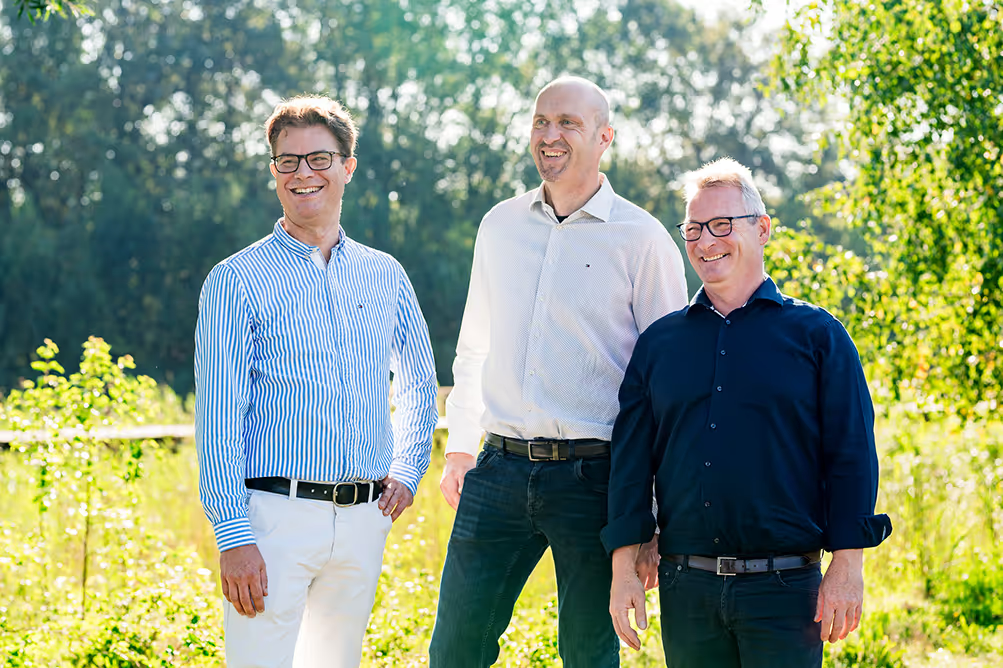
We are Salvia BioElectronics


People with migraine deserve more than relief, they deserve to reclaim their life
Salvia BioElectronics is pioneering a breakthrough therapy to transform chronic migraine treatment. MySalvia Therapy features an ultra-thin, unnoticeable implant designed to calm key nerves involved in migraine, activated with a simple tap on a small wearable device. Built for everyday life, it is developed to deliver drug-free relief without compromise. So, millions of people with migraine can live life, uninterrupted.
Founded in 2017 in Europe’s tech capital Eindhoven, Salvia brings together skilled device makers and MedTech entrepreneurs with extensive experience in medical devices and neuromodulation. Active in the United States, Europe, and Australia, the company is advancing clinical development with the support of leading investors. Salvia is also exploring the potential of its innovative technology for the treatment of cluster headache.
MySalvia Therapy
.jpg)
An ultra-thin implant for people with debilitating migraine
MySalvia Therapy is designed to put patients in full control. The therapy uses two ultra-thin implants, placed just beneath the skin of the forehead and the back of the head.
Salvia’s approach is user-activated and on demand. To activate therapy, patients use an external wearable device (MySalvia Device) and simply press a button to deliver targeted stimulation exactly when and where it is needed.
In the future, the MySalvia app will be introduced as a complement to the treatment, offering patients additional support in managing their condition.
Salvia’s migraine therapy is currently being evaluated in clinical studies. It has not yet been approved for commercial use. No claims are made regarding its safety or effectiveness.


Neuromodulation therapy for migraine
Salvia’s unique implant is designed to reduce the frequency and intensity of migraine attacks by delivering gentle electrical pulses to the nerves associated with the condition. This technology, known as neuromodulation, has been successfully used for decades in the treatment of other neurological disorders, such as Parkinson’s disease and epilepsy.
Electrical signals within the nervous system control how our body moves, feels and functions. In migraine, these signals can be disrupted. Neuromodulation could help correct this and restore balance.
"We are committed to providing people with severe migraine a new treatment option through their neurologist," says Dr. Wim Pollet, Medical Director at Salvia BioElectronics.
- Yilong Zheng, Christopher Weiyang Liu, Diana Xin Hui Chan, Damian Wen Kai Ong, Justin Rui Xin Ker, Wai Hoe Ng, Kai Rui Wan, Neurostimulation for Chronic Pain: A Systematic Review of High-Quality Randomized Controlled Trials With Long-Term Follow-Up, Neuromodulation: Technology at the Neural Interface, Volume 26, Issue 7, 2023, Pages 1276-1294, ISSN 1094-7159
- M. D. Johnson et al., "Neuromodulation for Brain Disorders: Challenges and Opportunities," in IEEE Transactions on Biomedical Engineering, vol. 60, no. 3, pp. 610-624, March 2013, doi: 10.1109/TBME.2013.2244890

Why the name Salvia?
The name Salvia comes from the Latin word "salvere," meaning to be in good health. Throughout history, the Salvia plant has been valued for its extraordinary medicinal properties, known for its ability to relieve pain, alleviate headaches, and even treat mental disorders. At Salvia, we believe everyone deserves good health, and that's why we are passionately committed to improving the lives of people with migraine.
How it started…
Salvia was founded on March 3, 2017 by Hubert Martens, Daniel Schobben and Wim Pollet. Starting with nothing more than innovative ideas and a blank whiteboard, the founders (with extensive backgrounds in medical technology and neuromodulation) began their journey by understanding the needs of medical professionals and patients, building a team and conceptualizing the first shapes, characteristics and functionalities of a neuromodulation solution for people with migraine.
It is not “just a headache”
Migraine affects more than one billion people worldwide each year and is the leading cause of disability in people under 50. Cluster headache, which causes excruciating pain behind the eye, is a rare neurological disorder affecting 1 in 1000 people. Read more about both conditions we address with our bioelectronic solution.

